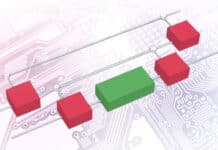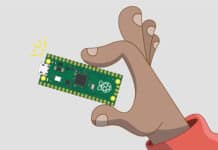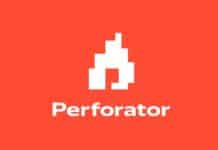If you are a newbie in the Linux domain, this article is for you. The author explores the ins and outs of the operating system and tells you why you should choose Linux over Windows.
In early 1980s, Microsoft entered the world of graphical OS with Windows 1.0. In an evolutionary manner, industry saw many versions of windows namely 2.0, NT, 95, 98, 2000, ME, XP, Vista, 7 and 8 with variety of editions. The well-known features of Windows are its Graphics, Animated appearance, user-friendliness, automated installation and maintenance, Interactive environment, etc. There are also server editions to support network infrastructure of an organization. But, these features end up with problems like Installation size, Quick corruption, Recovery issues, prone to viruses, unsafe execution environment etc. Also, we need to pay for a version and Upgrade or re-purchase investment is also there for subsequent versions.
In case of Linux, the operating system is very secure and robust. Every process is executed under environment controlled by privileges implied by administrator. This also prevents Linux from getting infected by viruses or backdoor attacks. The beauty of Linux lies in the power provided by its kernel and shell and that too, under well controlled environment. Policies once set properly, cannot be attacked or bypassed by unwanted users. Also, Linux installation takes only 6-8 GB including Swap space. Being Open source, Linux is freely available for installation and modification under GPL licence. A lot of flavours, namely Redhat, Fedora, CentOS, Ubuntu, Suse, Mint, Debian, etc., are available thus providing us with a wide range of working environments with many facilities and advantages of their own. Versions like Redhat or CentOS are mainly targeted for Network Administration where highly secure servers are deployed with real-time performance. Flavours like Ubuntu, Fedora, Mint etc are famous among home users due to their interactive and easy to use environment.
However, these flavours can also be used for administration. Also, Linux environments are easily customizable along with perfect recovery options. It can be easily controlled from GUI as well as CUI terminal. Almost all hardware devices are compatible with this OS and updated packages (rpm) can be downloaded from Linux communities, thus providing an updated experience with latest tools and trends. So, for readers who are newbies to linux, I must say that don’t be afraid of moving to linux. Once you get hand on with it, you will really enjoy working in this operating system. Helping you to have a start with Linux, I am providing the step-by-step installation procedure in dual boot with windows operating system. I hope you will give it a try and enjoy working in Linux.
Need of Dual/Multi boot
So, What is dual/multiboot & why do we need it? How is it done? I will answer these questions now. Suppose, you are a newbie and want to give a try to different OS flavours. Or, you need to work with some software which runs in windows environment only, dot net for example, and rest of the work you love to do in Linux, what will you do? Some people will purchase two computers, one for each OS. In case you want more OS flavours, more systems may be purchased. Isn’t that too costly taking every buck from your account for just purchasing computers? Should there be some other solution? Yeah, there should be is, and it is Dual/Multi boot. Dual booting a system mean you have two OSs installed in your system, and you would like to make a choice of the OS you wish to start when you switch on your computer. Here, we have taken an example of Windows and Linux dual boot. However, you can choose any hardware compatible OS for it. Multi boot means there are more than two OS installed. I have worked with at most 5 operating systems – Two windows and three Linux flavours – all worked fine, but some points should be kept in mind while mutibooting.
Things to remember
Every time you make a fresh installation over another, automatically, the newly installed OS become the default operating system for booting (however, advance users can change configuration). The operating systems become dependent on each other through a relation created in the Master Boot Record (MBR) of your hard disk. MBR is the initial location of your hard disk from where system looks up and starts an operating system or display available choices in case of Dual/Multi boot. Secondly, the sequence of installation matters, depending upon the compatibility of flavours. You should work on Dual boot before jumping to Multiboot. Since, multi installation makes a chain of OS choices, removing an OS will result in chain break, which may affect the Boot record adversely. This may result in a partial boot list, or, complete boot failure which means you may not be able to start any operating system.
If you want an easy start as a newbie, you may go for ‘Wubi’ as Linux installer. Wubi will install Ubuntu inside Windows as a software, which means, you will be able to remove Linux from within windows without corrupting boot record. Alternatively, you may go for the Live CD of Linux flavour you want which does not need installation before giving you a hand on experience.
In order to exploit all the features perfectly, independent installation is recommended.
Another thing to keep in mind is the basic partition structure. In any hard disk, maximum number of Primary partitions allowed is Four. This number may be insufficient when you want to install multiple OS and also need partitions for data. So, it is recommended to keep Two Primary partitions and an Extended partition which can contain a large number of logical partitions. It is recommended to install the first operating system in primary partition and rest of them in logical partitions.
Also, during installation, a Swap Area will be required to act as virtual RAM for paging and swapping. Following is the recommended size of swap area:
- If system RAM is less than or equal to 3 GB, Swap = 2 * RAM size.
- If system RAM is less than or equal to 6 GB, Swap = RAM or 1.5 * RAM size.
- If system RAM is greater than 6 GB, Swap = 0.5 * RAM size.
Basic requirements for installing Linux
-Installation Media (Linux CD/DVD)
– Minimum 20 GB Hard Disk
– CD/DVD drive, Keyboard, Mouse.
– There are other modes of installation also, like NFS, HTTP, Hard Drive, PXE boot, Kick start etc., which can be used by advance users. I will write an article on it in some other issue.
Installation
Assuming that Windows XP is already installed in C drive of your system, let us initiate Linux in our life through direct installation from CD/DVD. We will see installation of two flavours:
Steps to install UBUNTU 12.10 flavour from CD/DVD available with “Open Source For You, November 2012”
1. Insert Linux bootable CD/DVD in CD/DVD drive.
2. Setup CD/DVD drive as primary boot device in the BIOS setup (press F2 during boot), or boot from CD/DVD by pressing F12 during boot process.
3. Select Ubuntu 12.10 Desktop (64 Bit) Menu or 32 Bit menu if you do not have a 64 bit system.
If you want to have hands on experience without installing Linux, press enter on Try Ubuntu without installing. Otherwise, press enter on Install Ubuntu.
4. The installer will start Ubuntu setup.
5. Select English and click Continue.
6. Have a look at the resources checklist. You can accept to install third party software, if you want. Be sure to read the agreement policy mentioned there and Click Continue.
7. Since you want to dual boot your system, select Something else and click continue. It means you will manage the partitions manually.
8. Now, you will need to make some Linux partitions for continuing setup. The in-use device details will be shown for confirmation. Make sure you have backed up all your data from that drive and installing Linux in the intended partition. To assign Linux partitions, click on New Partition Table. You will be asked for confirmation of partition usage. Click Continue.
9. Click on free space, and then in the “+” symbol at bottom left. You will get create partition window as shown.
10. Give 6000 MB as Size, Ext4 in Use as and “/” as Mount Point. “/” is the root directory of Linux. Type for new partition should be chosen according to the points discussed in ‘Things to remember’ above. Click OK.
11. Now, create a Swap Area in Use as. The size should be selected according to discussion made in ‘Things to remember’. Click OK.
12. Optionally, a user’s independent Home directory can be made in rest of the blank space. I am not creating it right now and leave it to you as a choice.
13. Select the Boot loader installation. If you are not aware of boot loader, just leave it default and Linux will become your default booting OS.
14. When finished, Click on Install now.
15. Select your Time Zone, click Continue.
16. Select Keyboard layout and click Continue.
17. Provide User information as required.
18. Sit back and relax. You can read about the cool features by clicking on the arrow image.
19. On installation completion, click on Restart Now and your Linux machine is ready to work.
20. Boot with Linux and get a unique fresh look and feel. A very familiar interface is provided with a whole new look and features. Enjoy Linuxing…
There is not much difference between installers of various flavours. You will see little variations in options or buttons provided during installation. For example in Fedora 16 (available with “Linux for you, December 2011”), you may get option to check CD/DVD for errors, select storage type (Basic Storage, for example), partition type (Standard Partition, for example), you will get create button instead of “+” during partitioning, sizing options, etc. Also, you will get installation customization option which allows to select/deselect the packages according to your needs.
Recovery from corrupted Master Boot record (MBR)
Suppose, someone remove the Linux boot record and system stops booting, then how will you get your Windows system back? Don’t be afraid, I am providing a working solution here. Look at the snapshot where i have removed Linux partitions and then rebooted the system.
The system will stop booting up any operating system. A normal user will now reinstall all operating systems, thus losing his windows data. However, with a trick, you can get back your Windows system working. Just arrange a windows XP bootable disk and follow these steps:
- Boot from Windows setup disk.
- Wait for options window to appear and click “R” to repair.
- You will see a black and white console asking you for installation you like to log onto. Type “1” and press enter.
- Give Windows administrator password and press Enter.
- Now, on prompt, type fixmbr and press Enter.
- Read the message and Type “y” to write a new MBR and press Enter.
- When MBR writing is confirmed, just type exit and press enter. Your system will be rebooted and Windows operating system will be the default and only OS on your machine.I hope you would like it and give it a try to get something new.








































































Nice Post. :)
nice article for newbie’s
Useful stuff, even though I am a few hairs above pure newbie. One thing though, please proofread… and then proofread again. Also consider better structural formatting, as that was the harder part of this read.
Nice Articel… for starting with LINUX
But we can use the virtualbox for hands on the new LINUX OS.
I suggest if you want virtual machine than use Oracle Virtual Machine.